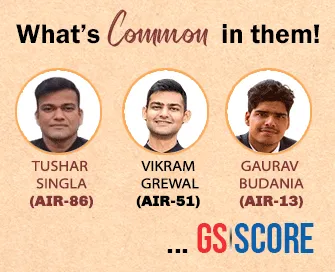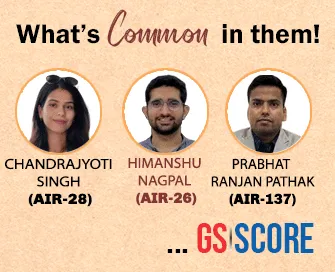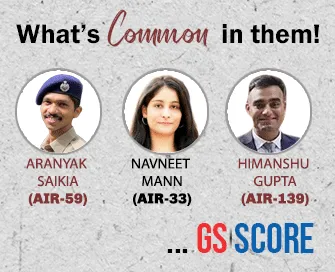

3rd July 2025 (12 Topics)
Mains Issues
Context
On July 2025, the Union Cabinet approved the Employment Linked Incentive (ELI) Scheme with a financial outlay of ?99,446 crore to generate over 3.5 crore jobs across India, with special emphasis on first-time employees and job creation in the manufacturing sector.
Employment Linked Incentive (ELI) Scheme
Objectives and Strategic Vision
- Addressing Structural Labour Market Challenges
- Targeting low formalisation of the labour force.
- Combating sluggish employment growth in the manufacturing sector.
- Providing structured incentives for youth integration into formal workforce.
- Doubling as Social Security and Financial Inclusion Reform
- Incentivising EPFO registration and continuous employment.
- Encouraging financial literacy among first-time employees.
- Ensuring savings through mandatory financial deposits.
Key features:
- Part A – Incentives for First-Time Employees
- Coverage: First-time EPFO-registered employees with salaries up to ?1 lakh/month.
- Incentive: One month’s EPF wage (up to ?15,000), disbursed in two instalments:
- After 6 months of continuous service.
- After 12 months + financial literacy completion.
- Savings Link: Partial amount deposited in a savings instrument for long-term planning.
- Targeted Beneficiaries: 1.92 crore workers.
- Part B – Incentives for Employers to Create and Retain Jobs
- Employer Incentive (per new hire per month):
- ?1,000 (salary up to ?10,000),
- ?2,000 (?10,001–?20,000),
- ?3,000 (?20,001–?1 lakh).
- Employer Incentive (per new hire per month):
- Minimum hiring thresholds:
-
- At least 2 new employees (staff <50),
- At least 5 new employees (staff ?50).
- Duration: 2 years (all sectors), 4 years (manufacturing sector).
- Projected Impact: Creation of 2.6 crore jobs.
-
Implementation Mechanism
- Disbursement Channels
-
- Direct Benefit Transfer (DBT)-based approach to ensure transparency.
- ABPS (Aadhaar-based) for employee incentives.
- PAN-linked accounts for employer reimbursements.
- Compliance and Accountability
- Incentives linked to employee retention and continuous employment for minimum 6–12 months.
- EPFO and financial literacy as eligibility markers.
Broader Implications
- Formalisation of Labour Market
- Integration of informal workers into social security mechanisms.
- Long-term impact on EPF coverage and financial inclusion.
- Sectoral Focus and Economic Multiplier
- Prioritisation of manufacturing aligns with India’s production-led growth strategy.
- Encourages MSMEs and startups to expand workforce in a cost-effective manner.
- Concerns Raised
- Trade unions (e.g., CITU) flagged potential misuse and inadequate accountability for employers.
- Risk of substitution effect – replacing existing workers to avail incentives.


Mains Issues
Context
External Affairs Minister during the Quad Foreign Ministers’ meeting in Washington DC, reaffirmed India’s right to self-defence against terrorism and called for greater appreciation from Quad partners. The meeting also reviewed progress in key Quad initiatives and Indo-Pacific cooperation.
QUAD (Quadrilateral Security Dialogue)
- Members: India, United States, Japan, Australia
- Nature: Informal strategic forum, not a military alliance
- Inception: Proposed in 2007 by Japanese PM Shinzo Abe; revived in 2017
- Core Principles:
- Free, open, inclusive, and rules-based Indo-Pacific
- Maritime security, infrastructure connectivity, resilient supply chains
- Climate cooperation, critical technologies, and humanitarian response
Significance of QUAD for India
- Strategic Counterbalance to China
- Acts as a soft security alliance amid border tensions with China (e.g., Galwan clashes, 2020)
- Malabar Naval Exercises enhance maritime deterrence
- India's ‘Necklace of Diamonds’ strategy counters China’s ‘String of Pearls’
- Technological and Economic Cooperation
- QUAD Critical & Emerging Technology Forum: Focuses on AI, Quantum, Biotech
- National Quantum Mission (India): Supported by QUAD collaboration
- Indo-Pacific Economic Framework (IPEF): Offers alternatives to China-led trade arrangements
- Infrastructure Development
- QUAD Infrastructure Coordination Group aligns with:
- India’s International North-South Transport Corridor (INSTC)
- Vision for regional connectivity and strategic influence
- QUAD Infrastructure Coordination Group aligns with:
- Maritime Domain Awareness
- Indo-Pacific Maritime Domain Awareness (IPMDA) launched in 2022
- Enhances real-time tracking of vessels, combats illegal fishing and piracy
- Climate and Disaster Response
- QUAD Climate Adaptation Package (Q-CHAMP) supports:
- Green shipping corridors
- Renewable energy cooperation
- Early warning systems and disaster mitigation
- QUAD Climate Adaptation Package (Q-CHAMP) supports:
- Cyber Security and Critical Technologies
- QUAD Cybersecurity Partnership (2023) enhances regional cyber resilience
- Launch of Open Radio Access Networks (RAN) in the Pacific (USD 20 million committed)
- Semiconductor supply chains and secure telecom infrastructure supported
Major Challenges for India within QUAD
- China’s Perception and Bilateral Tensions
- China views QUAD as a containment strategy
- India balances strategic assertiveness with economic ties (bilateral trade: $135.98 billion in 2022)
- Divergent Member Priorities
- US-Australia focus on security; India emphasizes inclusive, non-militarized cooperation
- Differing stances on Ukraine-Russia war highlighted internal divergences
- Resource and Institutional Constraints
- Domestic priorities may limit India’s capacity to fully implement QUAD obligations
- QUAD vaccine initiative saw delays due to internal demand surges
- Operational and Interoperability Issues
- India’s diverse defense imports (especially Russian systems) limit full interoperability
- US CAATSA concerns linked to India’s S-400 purchase from Russia
- Diplomatic Balancing
- India needs to maintain ASEAN centrality and continue BRICS-SCO engagements
- Managing dual participation in QUAD and platforms with China and Russia requires nuanced diplomacy
Strategic Measures for India
- Issue-Based Alignment: Focus on tech, cyber, climate, and infrastructure while avoiding rigid security alliances
- Enhancing Domestic Capacity: Defense production under ‘Make in India’ (?1.08 lakh crore in 2022–23) and $10 billion semiconductor mission aligns with QUAD tech cooperation
- Agenda Setting: Lead in areas like climate (ISA, CDRI), disaster management, and green energy
- Strategic Autonomy and Diversification: Engage multilaterally (G20, SCO, ASEAN, BRICS) to preserve diplomatic space
- Economic and Technological Sovereignty: Supply Chain Resilience Initiative (SCRI) with Japan-Australia (2021) and Personal Data Protection Act 2024 strengthens tech governance within QUAD


Mains Issues
Context
Prime Minister Narendra Modi has embarked on a five-nation tour, including participation in the BRICS Summit in Brazil and bilateral visits to Ghana, Trinidad and Tobago, Argentina, and Namibia. The visit underscores India's strategic focus on strengthening ties with the Global South and reinforcing its commitment to a multipolar world order.
What is the Global South?
- Refers to developing countries primarily in Asia, Africa, Latin America, and Oceania.
- Characterized by higher poverty, limited industrialization, colonial legacies, and underrepresentation in global governance.
- Contrasted with the Global North – developed, industrialized nations in Europe, North America, Japan, and Oceania.
The Brandt Line
- Proposed by Willy Brandt (1980s) to depict global economic inequality.
- An imaginary North-South divide between rich and poor nations.
- Most Global South countries lie below the Brandt Line, in the Southern Hemisphere.
India’s Historical Role in the Global South
- Non-Aligned Movement (NAM): India was a founding leader; promoted strategic autonomy during Cold War.
- Group of 77 (G-77): India helped form this bloc to give developing countries a voice at the UN.
- Stockholm Conference 1972: India advocated Common But Differentiated Responsibilities (CBDR), Polluter Pays, and Sustainable Development
Shift in India’s Policy Post-Cold War
- Reduced engagement with NAM and G-77.
- Deepened ties with Global North (e.g., US, EU, Japan).
- Greater focus on strategic interests (e.g., India–US Civil Nuclear Deal).
- Increasing participation in new forums like BRICS, SCO, ASEAN.
Challenges Faced by the Global South
- Underrepresentation in institutions like UNSC, IMF, World Bank.
- Public Debt Crisis – as per UNCTAD, debt in developing nations is rising at double the rate of the Global North.
- Weak dispute resolution in WTO; marginalization in global financial frameworks.
- Diverging ideologies with the West on democracy, rights, and climate action.
- Impact of geopolitical conflicts (e.g., Russia-Ukraine war) worsening food and energy insecurity.
India as the Voice of the Global South – Key Initiatives
- New Delhi Declaration (G20 2023): Included Global South priorities – debt relief, climate justice, gender equality.
- Inclusion of African Union in G20: Pushed by India for greater representation.
- Voice of Global South Summit (2023): 120+ countries participated; built solidarity among developing nations.
- Vaccine Maitri: Supplied COVID-19 vaccines/medicines to 90+ Global South countries.
- BRICS Expansion to BRICS Plus: India supported inclusion of African, West Asian, and Latin American nations.
- Climate Justice Advocacy: Strong leadership at COP28, including support for Loss and Damage Fund.
Hurdles in India’s Global South Leadership
- UNSC Seat Opposition: Coffee Club (including Global South members) resists G4 expansion.
- Neglect of NAM and G-77: Leads to weakening of old alliances.
- China’s Dominance: China’s Belt and Road Initiative (BRI) overshadows Indian efforts.
- Irregular Engagement: No India–Africa Summit post-2018; absent at Pacific Island Summit 2023.
- "Big Brother" Perception: Allegations of interference in internal matters (e.g., Maldives’ “India Out” campaign).
- Slow Project Delivery: Delays in key projects like Kaladan and Asia–Africa Growth Corridor reduce credibility.
Way Forward:
- Create a Global South Development Bank: To rival Chinese financing models and increase Indian soft power.
- Revive NAM and G-77 Engagement: Increase high-level political participation and relevance.
- Improve Infrastructure Project Delivery: Focus on time-bound execution of development partnerships.
- Promote Mutual Respect Diplomacy: Avoid coercive tactics; build trust-based relationships.
- Institutionalize Regular Summits: Reinstate and expand India–Africa and India–Pacific Island
- Capacity Building Focus: Share Indian expertise in MSMEs, digital infrastructure, climate resilience, health, and food security.


Mains Issues
Context
The Union Budget 2025 recognised gig and platform workers by extending social protection schemes. However, the revised Periodic Labour Force Survey (PLFS) 2025 failed to incorporate specific classifications for these workers, limiting data-driven welfare interventions.
Definition & Legal Classification of Gig Workers
- Codification under Social Security Code, 2020: Gig workers are defined under Section 2(35) of the Code on Social Security, 2020, distinguishing them from traditional employer-employee frameworks.
- Ambiguity in Terminology: Despite the legal mention, lack of clarity around task structure, hybrid work nature, and algorithmic governance remains.
- NITI Aayog Estimates: India’s gig workforce is projected to reach 23.5 million by 2029–30, yet it lacks robust statistical representation.
Issues in Current PLFS Framework
- Vague Categorisation: Gig work is subsumed under broader PLFS categories like "self-employed" or "casual labour," masking its unique vulnerabilities.
- Ministry Response & Statistical Shortcomings: The government stated gig workers are included as part of "economic activity," but failed to modify classifications for digital labour.
- Invisible Labour Dynamics: PLFS overlooks characteristics such as lack of contracts, income volatility, multiple-app employment, and algorithmic control.
Social Security and Policy Challenges
- Unrealised Welfare Intentions: Provisions under Clause 141 of the Social Security Code remain weak due to poor data-backed targeting.
- Exclusion from Access: Gig workers often remain outside the net of Ayushman Bharat, digital health IDs, and other schemes due to their statistical invisibility.
- Gap Between Recognition and Representation: While administrative mechanisms like e-Shram exist, the absence of a separate PLFS category results in under-coverage and policy inefficiency.
Way Forward
- Institutional Realignment of PLFS: A special classification code for gig and platform workers must be introduced in PLFS to disaggregate employment data effectively.
- Survey Methodology Reform: Questionnaire modules should reflect platform-based task work, multiple job holdings, contract type, algorithmic dependence, and social security access.
- Inter-Agency Coordination: National Statistical Office (NSO), NITI Aayog, and the Ministry of Labour must collaborate to ensure integrated, inclusive labour data generation.
- Expansion of Welfare Boards: Gig workers must be included in State-level welfare boards under dedicated categories for monitoring benefit delivery.
- Promoting Digital Labour Equity: With India's increasing digital economy footprint, inclusion of gig workers in employment datasets is critical for equitable growth and social protection.


Prelims Articles
Context
The Delhi Government has decided to postpone its planned cloud seeding trial for artificial rain after receiving scientific recommendations from the India Meteorological Department (IMD) and the Indian Institute of Tropical Meteorology (IITM), Pune. The decision was based on the assessment that prevailing monsoon cloud patterns were not conducive to effective seeding operations, which require specific atmospheric and cloud conditions to yield optimal results.
What is Cloud Seeding?
- Cloud seeding is a weather modification technique that involves dispersing substances into clouds to encourage precipitation.
- Commonly used agents include:
- Silver iodide (AgI)
- Potassium iodide (KI)
- Dry ice (solid CO?)
- These substances act as nuclei for condensation, enhancing the ability of clouds to produce rain.
Purpose of Cloud Seeding in Delhi
- Aimed at combating air pollution by:
- Increasing rainfall to settle particulate matter (PM2.5 and PM10) in the air.
- Improving air quality index (AQI) in the National Capital Region (NCR).
- Coordinated by IIT Kanpur, involving 13 departments and clearances from the Directorate General of Civil Aviation (DGCA).
Key Institutional Stakeholders
- India Meteorological Department (IMD) – Forecasting cloud structures and precipitation potential.
- Indian Institute of Tropical Meteorology (IITM), Pune – Atmospheric modelling and advisories on seeding viability.
- IIT Kanpur – Scientific execution and cloud microphysics modelling.
- DGCA – Aviation safety clearance for aircraft-based cloud seeding.
Scientific Conditions for Successful Cloud Seeding
- Cloud seeding is effective only when pre-existing clouds have sufficient moisture and vertical development.
- Cumulus clouds with adequate liquid water content are ideal.
- Monsoon clouds, due to high variability and saturated conditions, may not always respond to seeding agents.


Prelims Articles
Context
The Kerala Government has initiated a project to transform Munnar into a Responsible Tourism Destination by the end of this year. The goal is to develop the hill station as a net-zero carbon tourist location by adopting sustainable, gender-inclusive, and plastic-free tourism practices while protecting the region’s fragile ecosystem. ?50 lakh has been sanctioned for the initiative.
What is Responsible Tourism?
- Responsible Tourism is a tourism model that minimizes negative environmental, social, and economic impacts.
- It aims to:
- Generate greater economic benefits for local people,
- Enhance the well-being of host communities,
- Improve working conditions and access to the industry,
- Involve local people in decision-making,
- Conserve natural and cultural heritage.
Munnar’s Strategic Importance
- Munnar, located in Kerala’s Idukki district, is a prominent hill station in the Western Ghats, a UNESCO World Heritage Biodiversity Hotspot.
- Receives approx. 12 lakh tourists annually (excluding day-trippers, actual footfall likely 4 times higher).
- The region is ecologically sensitive, with endemic flora and fauna, and faces challenges like waste generation, plastic use, and ecosystem degradation.
Key Sustainable Interventions Planned
- Net-Zero Carbon Tourism: Minimizing carbon footprint through low-impact travel, eco-friendly accommodations, and sustainable infrastructure.
- Plastic-Free Initiative: Elimination of single-use plastics; installation of signage and awareness campaigns.
- Village Life Experience Packages: Promoting rural and experiential tourism models.
- Stakeholder Training: Training programs for:
- Local guides, community leaders, drivers (auto/taxi), and tourism staff.
- Gender-Inclusive Tourism: Promoting women participation as hosts, entrepreneurs, and tourists to ensure equitable and safe tourism.
Responsible Tourism in Kerala – Background
- Kerala is a pioneer state in Responsible Tourism Mission (RTM).
- RTM launched in 2017, integrates tourism with local economic development and environmental sustainability.
- Focus areas include local sourcing, employment generation, waste management, and community participation.
|
Gulf of Mannar: Geographical Overview
Gulf of Mannar Marine Biosphere Reserve
Ecological Richness
Coral Reef Areas in India (only four major regions):
|


Prelims Articles
Context
Gram panchayats in over 10 districts of Chhattisgarh are protesting a State Forest Department order suspending all Community Forest Resource (CFR) management activities under the Forest Rights Act, 2006. The move has sparked concerns over infringement of tribal rights and jurisdictional conflict with the Tribal Welfare Department.
Forest Rights Act, 2006 (FRA):
- Recognizes the rights of forest-dwelling Scheduled Tribes and other traditional forest dwellers to forest resources.
- Section 3(1)(i) provides for the right to protect, regenerate or conserve or manage any community forest resource (CFR).
- Gram Sabha is the statutory authority for initiating the process of determining rights under FRA.
Community Forest Resource (CFR):
- CFR refers to customary forest areas traditionally used by communities for livelihood and cultural practices.
- Under Rule 4(1)(e) of the FRA Rules, 2012, the gram sabha is empowered to manage CFRs and prepare conservation and management plans.
Controversy in Chhattisgarh:
- The Forest Department’s order prohibits any CFR-related activity by either government or private entities.
- Protesters argue this order contradicts the FRA, which vests forest management authority in the gram sabha and the Tribal Welfare Department—not the Forest Department.
- Allegations suggest an attempt to centralize control over forests, contrary to community-based governance envisioned by FRA.
Conflict of Administrative Jurisdiction:
- The Tribal Welfare Department is the designated nodal agency for FRA implementation.
- The Forest Department’s attempt to act as the nodal department has been termed illegal and ultra vires by civil society groups.
- This raises broader questions on the bureaucratic resistance to decentralization and community forest governance.
Constitutional and Legal Backing:
- The PESA Act, 1996 also strengthens the role of gram sabhas in Scheduled Areas regarding natural resource management.
- Judicial interpretations, including in Orissa Mining Corporation v. Ministry of Environment & Forests (2013), reaffirmed the primacy of gram sabha consent in forest matters.


Prelims Articles
Context
Electronic Private Automatic Branch Exchange (EPABX) systems form a core part of institutional telecommunication, enabling automated internal and external call routing. Their evolution from electromechanical to digital and VoIP-based technologies has significantly improved efficiency and integration with modern communication networks
What is EPABX?
- EPABX stands for Electronic Private Automatic Branch Exchange.
- It is a private telephone switching system that facilitates internal communication within an organization and interfaces with external phone networks via the Public Switched Telephone Network (PSTN).
- It allows for call routing, forwarding, voicemail, interactive menus, and internal extensions without requiring a separate physical line for each phone.
Functional Components and Mechanisms:
- Internal Communication: Call routed via extension numbers using internal switching without accessing the PSTN.
- External Communication: Requires dialing an access code (commonly '0'), following which EPABX routes the call to a trunk line connected to the PSTN.
- Incoming Call Handling:
- Manual routing via a receptionist (in legacy systems).
- Automated Call Routing and IVRS (in modern systems).
- Switching Mechanism:
- Older models used electromechanical relays and crossbar switches.
- Newer systems use digital switching with Pulse Code Modulation (PCM) and Time Division Multiplexing (TDM).
- Latest systems support Voice over Internet Protocol (VoIP) with IP-based switching, call recording, voicemail, and real-time routing.


Prelims Articles
Context
Researchers have successfully sequenced the first complete ancient Egyptian genome from a 4,500–4,800-year-old male buried during Egypt’s Old Kingdom at Nuwayrat, 265 km south of Cairo. This is the oldest and most complete DNA sample from ancient Egypt, offering new insights into early North African ancestry and interregional genetic exchange.
Genomic Milestone
- This genome marks the oldest complete human DNA sequence recovered from Egypt.
- It belongs to a male aged 44–64 years, with brown eyes, brown hair, and dark to black skin pigmentation, as per phenotypic predictions.
Burial Context & Preservation
- The individual was buried in a large ceramic pot inside a rock-cut tomb, facilitating stable temperature conditions favorable for DNA preservation.
- Teeth root tips were used to extract DNA — a reliable source due to high preservation potential.
Ancestral Composition & Cultural Linkages
- The genome indicates 78% North African ancestry, specifically from Neolithic Moroccan populations.
- 22% of the DNA links to early Mesopotamian farmers, indicating ancient cultural and genetic exchange possibly via Levantine intermediaries.


Editorials
Context
India is recalibrating its development cooperation strategy with the Global South amidst rising sovereign debt, declining Official Development Assistance (ODA), and global financial volatility. In this backdrop, India has emphasized a balanced engagement model and is increasingly exploring Triangular Cooperation (TrC) with like-minded partners such as Germany and the U.K. to achieve Sustainable Development Goals (SDGs) in third countries.
India’s Shifting Development Finance Model
- Rising Quantum of Development Assistance: India’s development assistance has expanded from $3 billion (2010–11) to $7 billion (2023–24), reflecting deeper engagement with the Global South under the Indian Development and Economic Assistance Scheme (IDEAS).
- Modalities of Engagement Rebalanced: India is now seeking a harmonious balance across five modalities: capacity building, technology transfer, market access, grants, and concessional finance — moving away from a LoC-dominated approach.
- Budgetary Red Flag for Concessional Credit: The Finance Ministry has flagged concerns over extending LoCs amidst global debt crises, signaling a need for cost-effective and sustainable alternatives to concessional financing.
Global Development Finance in Crisis
- ODA Collapse and Geopolitical Headwinds: Traditional ODA flows from OECD countries have plummeted from $214 billion (2023) to an expected $97 billion (2024) — a 45% decline, disrupting development programmes in the Global South.
- Debt Crisis in Developing Countries: Developing countries are burdened with unsustainable debt levels and face high borrowing costs, limiting their ability to access global capital markets.
- SDG Financing Gap Widens: The investment required to meet SDGs has risen from $2.5 trillion (2015) to over $4 trillion (2024), putting global development goals in jeopardy.
Triangular Cooperation as a Strategic Alternative
- Concept and Advantages of Triangular Cooperation (TrC): TrC brings together a donor (Global North), a pivot country (India), and a partner country (Global South) to co-create solutions, enabling inclusive, locally tailored development.
- India’s TrC Initiatives with Germany and UK: Under the India-Germany Joint Declaration of Intent (2022), TrC projects are operational in Cameroon, Ghana, Malawi, and Peru; similar initiatives are underway with the UK via the Global Innovation Partnership (GIP).
- G20 and India’s Leadership in TrC: During India’s G20 Presidency, TrC was reinforced as a cost-effective mechanism for scalable development by leveraging India’s technical, financial, and human capital with that of developed nations.
Practice Question:
India’s development cooperation with the Global South is transitioning from traditional concessional finance to innovative models like Triangular Cooperation (TrC). Critically evaluate the effectiveness of this shift in light of declining global aid and rising debt distress among developing nations.
(250 words)


Editorials
Context
India continues to face a significant gap in access to palliative care, with only 1%-2% of the nearly 10 million people requiring such services annually receiving appropriate care. Despite its inclusion in the 2017 National Health Policy, inadequate funding, workforce shortages, and weak public awareness hinder its nationwide implementation.
Understanding the Palliative Care Gap in India
- Magnitude of Unmet Need: According to WHO, 40 million people require palliative care annually, 78% of them in low- and middle-income countries. In India, 7–10 million need it, but only 1%–2% have access, reflecting a critical public health shortfall.
- Systemic and Infrastructural Deficiencies: While palliative care is part of the primary health sector, it lacks integration in tertiary care and remains underfunded, with rural and economically disadvantaged populations being the most neglected.
- Shortage of Trained Workforce: Despite a doctor–population ratio of 1:834 (better than WHO norm), India suffers from a severe shortage of palliative care-trained doctors, impeding pain management and end-of-life support services.
Policy Measures and Capacity Building
- Educational Integration: Integrating palliative care into the MBBS curriculum and expanding training initiatives through AIIMS and ICMR can develop a skilled workforce sensitive to end-of-life issues.
- Leveraging Allied Health Workforce: India has 33 lakh registered nurses and 13 lakh allied health professionals. Task-shifting and targeted training can help decentralize palliative care delivery, particularly in rural regions.
- Role of Health Insurance and State Funding: Inclusion of palliative care under Ayushman Bharat and dedicated government budget allocations can ensure affordability and institutionalization of these services across both public and private sectors.
Strategic Reforms and Global Learning
- Public Awareness and Early Access: Public outreach campaigns must clarify that palliative care is not limited to terminal care, but extends to improving quality of life across all serious illnesses, thereby encouraging timely utilization.
- International Best Practices: The S. model of hospice-based, insurance-backed care underscores the role of funding and end-of-life dignity, offering a useful template for India’s adaptation within its socio-economic realities.
- Collaborative and Evidence-Based Approach: Partnerships with NGOs, private providers, and continuous research-based improvements can accelerate delivery and enhance trust in palliative care systems across the country.
Practice Question:
Despite policy inclusion, palliative care remains a neglected domain in India’s public health landscape. Examine the systemic challenges in its implementation and suggest a multi-tiered strategy to improve palliative care delivery in India.
(250 words)


Editorials
Context
The Madhya Pradesh Pollution Control Board has confirmed the incineration of 337 tonnes of toxic waste from the defunct Union Carbide plant in Pithampur, marking a significant development in the long-delayed environmental cleanup related to the 1984 Bhopal gas disaster.
Hazardous Waste Disposal – Execution and Gaps
- Judicial and Administrative Intervention: The waste disposal process required sustained intervention from the Madhya Pradesh High Court, Supreme Court, and the Union Environment Ministry, highlighting systemic delays in environmental remediation.
- Technical and Financial Feasibility: The incineration was completed in six months at a cost of ?126 crore, demonstrating that logistical capacity existed but political will was lacking for over a decade.
- Residual Waste and Future Liabilities: Over 800 tonnes of incinerated ash now require scientific landfilling with long-term monitoring, and the Union Carbide site still contains contaminated soil and subsurface toxins, posing ongoing environmental risks.
Role of Civil Society and Victims in Driving Accountability
- Civil Society Mobilisation: The initiative for waste removal came largely from survivors, activists, and civil society, with minimal proactive response from the state apparatus.
- Legal Battle for Compensation: Victims’ groups continue to demand inflation-adjusted compensation, while Dow Chemical remains a proclaimed offender, despite the Supreme Court having closed the curative petition route.
- Inadequate Health Infrastructure: Advisory bodies meant to monitor health and remediation meet infrequently, and local hospitals continue to face shortages of specialists for long-term survivor care.
The Path Ahead – Comprehensive Remediation Framework Needed
- Holding Polluters Accountable: Dow Chemical must be made legally and financially accountable for pending environmental and health-related remediation at the Union Carbide site.
- Creation of a Statutory Oversight Body: A new statutory institution may be needed to consolidate health care, environmental remediation, and compensation into a unified, accountable mechanism.
- Dignity and Closure for Affected Families: The ultimate goal should be to ensure that survivors and families can move forward, with justice, rehabilitation, and restitution completed in a time-bound and transparent manner.
Practice Question:
The 1984 Bhopal Gas Tragedy continues to cast a long shadow over India’s environmental and legal response mechanisms. Critically evaluate the systemic challenges in disaster remediation and propose institutional reforms to ensure long-term justice for affected communities.
(250 words)




